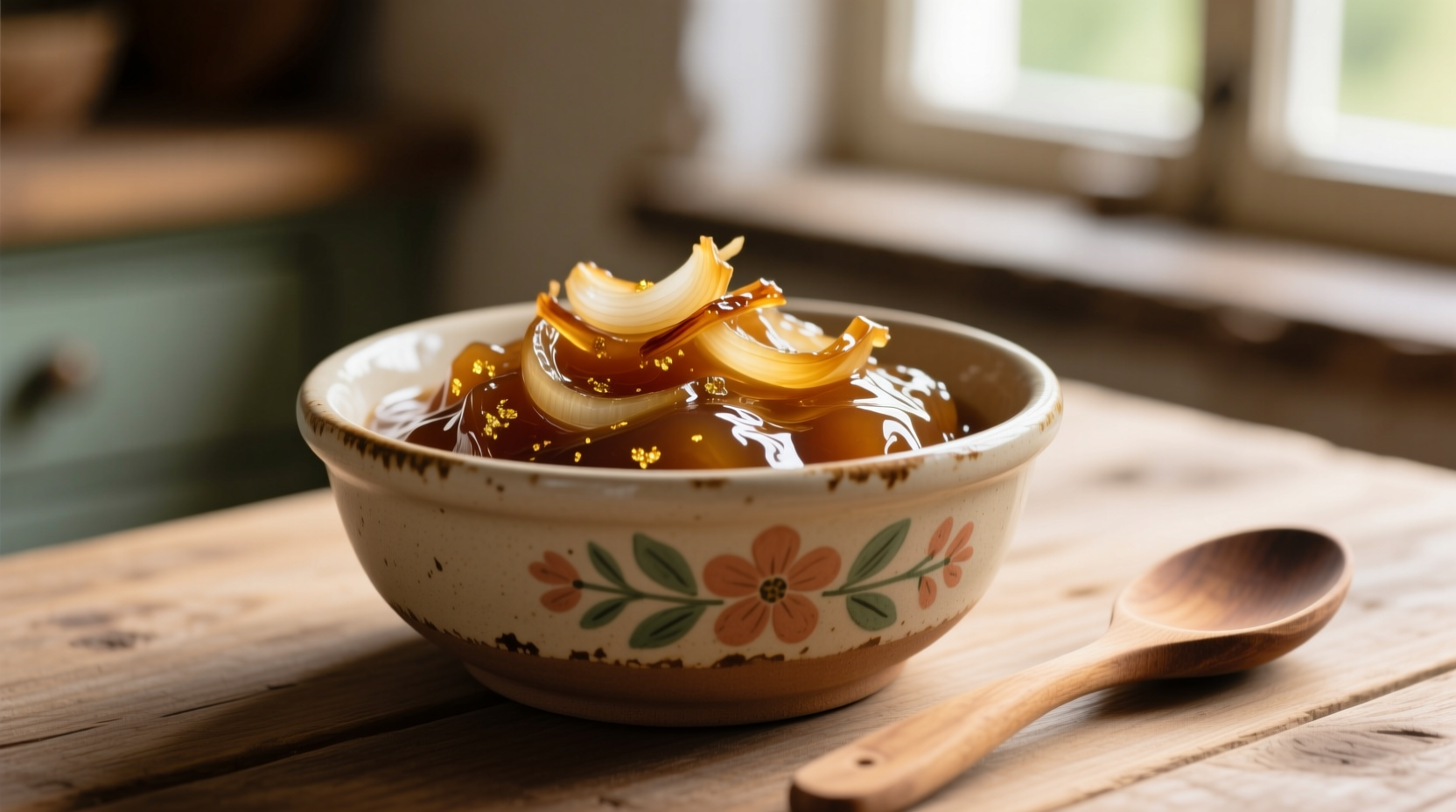Make perfect homemade onion jam with this simple 45-minute recipe using just 5 basic ingredients. This versatile sweet-savory condiment elevates meats, cheeses, and sandwiches with its rich caramelized flavor. Includes professional chef tips for ideal texture, storage guidelines, and creative serving ideas.

What Makes This Onion Jam Recipe Special
Unlike basic caramelized onions, this perfected onion jam recipe delivers the ideal balance of sweet and savory flavors with a spreadable consistency that works as both a condiment and cooking ingredient. Professional chefs rely on this technique to transform humble onions into a gourmet accompaniment that complements everything from roasted meats to artisanal cheeses.
The Science Behind Perfect Onion Jam
Creating exceptional onion jam requires understanding the Maillard reaction and caramelization process. When onions cook slowly, their natural sugars (approximately 4-5% by weight according to USDA agricultural data) break down and transform, developing complex flavor compounds. The addition of a small amount of sugar (about 15% of the onion weight) accelerates this process while maintaining the onions' structural integrity.
| Onion Type | Sugar Content | Best For |
|---|---|---|
| Yellow Onions | 4.2-4.8% | Classic balanced flavor |
| Vidalia Onions | 5.5-6.0% | Sweeter jam, less cooking time |
| Red Onions | 3.8-4.3% | Vibrant color, sharper finish |
Essential Ingredients for Success
The magic happens with just five ingredients, but each plays a critical role:
- Onions (3 lbs): Yellow onions provide the best balance, though Vidalias create a sweeter jam
- Butter (3 tbsp): Adds richness and helps with even browning (use unsalted for better control)
- Brown sugar (3 tbsp): Enhances caramelization without overwhelming sweetness
- Apple cider vinegar (2 tbsp): Provides necessary acidity to balance sweetness
- Salt (1 tsp): Critical for flavor development and texture
Step-by-Step Preparation Guide
Follow these professional techniques for foolproof onion jam every time:
- Prep onions: Slice 3 pounds of onions uniformly (1/8 inch thick) using a mandoline for consistency
- Initial sweat: Cook onions over medium heat with butter and salt for 10 minutes until softened but not browned
- Slow caramelization: Reduce heat to low, cover, and cook for 30 minutes, stirring every 10 minutes
- Final reduction: Uncover, add sugar and vinegar, and cook 15-20 minutes until thickened to jam consistency
- Cooling: Transfer to container and cool completely before storing
Avoid These Common Onion Jam Mistakes
Even experienced cooks encounter these pitfalls:
- High heat cooking: Creates burnt spots instead of even caramelization (proper temperature is 275-300°F)
- Insufficient salt: Results in flat, one-dimensional flavor
- Overcrowded pan: Causes steaming instead of caramelizing - use a 12-inch skillet for 3 lbs onions
- Early acid addition: Adding vinegar too soon prevents proper browning - wait until final reduction stage
Creative Ways to Use Your Onion Jam
Move beyond basic applications with these chef-recommended pairings:
- With meats: Serve with roast pork loin, duck breast, or as a burger topping
- Cheese pairings: Complements aged cheddar, blue cheese, and goat cheese
- Sandwich enhancement: Spread on grilled cheese or turkey sandwiches
- Cooking ingredient: Stir into gravy, mix with mayo for dipping sauce, or fold into meatloaf
- Breakfast boost: Top scrambled eggs or mix into breakfast sandwiches
Proper Storage and Shelf Life
Following USDA food safety guidelines, properly stored onion jam maintains quality and safety:
- Refrigeration: Store in airtight container for up to 2 weeks (40°F or below)
- Freezing: Portion into ice cube trays, then transfer to freezer bags for up to 6 months
- Room temperature: Only safe for 2 hours during serving (per FDA food code)
- Signs of spoilage: Mold, sour smell, or significant color change indicate it should be discarded
Delicious Recipe Variations to Try
Once you've mastered the basic technique, experiment with these professional variations:
- Spiced version: Add 1 tsp thyme and 1/4 tsp black pepper during final reduction
- Apple-onion jam: Incorporate 1 diced apple during the sweating stage
- Balsamic variation: Substitute balsamic vinegar for cider vinegar for deeper flavor
- Spicy kick: Add 1 minced jalapeño with the onions for heat lovers
- Herb-infused: Stir in 2 tbsp fresh rosemary or sage at the end of cooking











 浙公网安备
33010002000092号
浙公网安备
33010002000092号 浙B2-20120091-4
浙B2-20120091-4